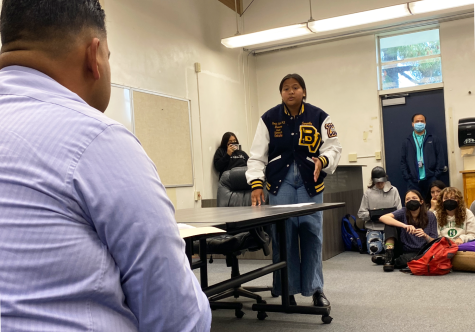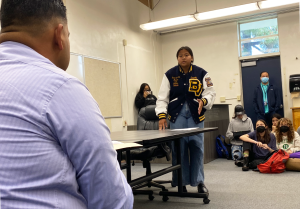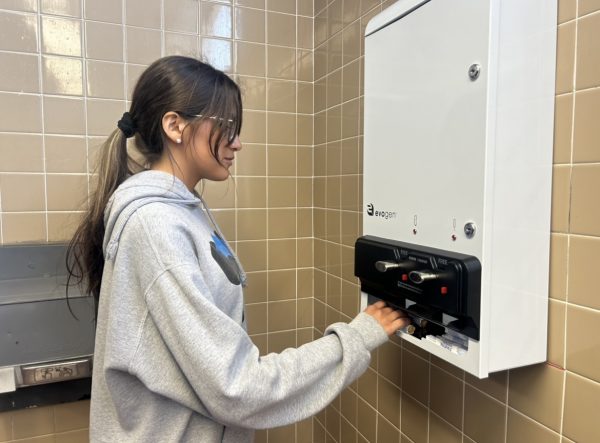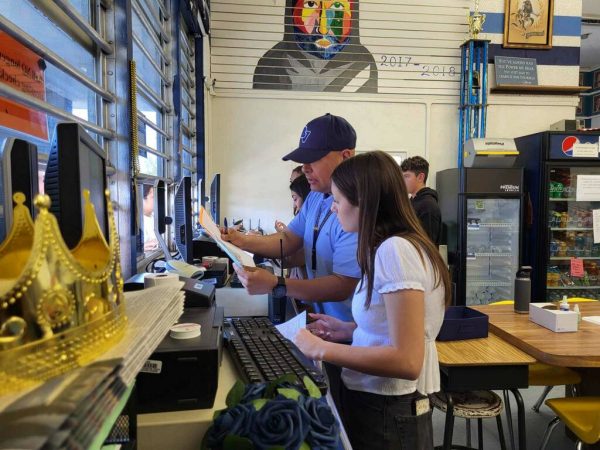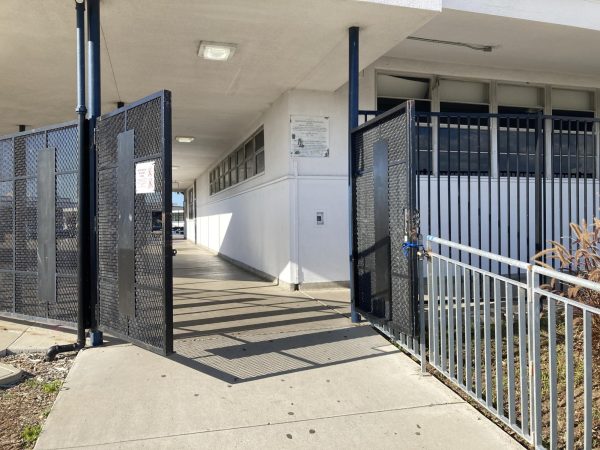Training targets student safety
Diastat training available to BVH staff members
Bonita Vista High (BVH) nurse Bernadette Currin teaches BVH staff members through her presentation about Diastat. The presentation informs staff members about what Diastat is used for and how it should be administered.
May 4, 2022
On April 22, Bonita Vista High (BVH) teachers and staff members attended an after-school presentation about Diastat training, with the presentation taking place in the BVH cafeteria. Diastat is a gel form of diazepam—a drug used to relax agitation and relieve anxiety—and is used as an emergency medication to help stop students who experience seizures.
BVHs school nurse, Bernadette Currin, instructed the presentation. She explained that it would be important to know the basic procedures of how to deal with seizures in case an emergency occurred.
“It’s [Diastat] for kids with seizures who have either longer seizures, usually over five minutes, or repetitive seizures. In that timeframe, they would get emergency medication,” Currin said.
At the training, the presentation touched on the two types of seizures requiring Diastat. The first type of seizure is called Status Epilepticus. This means that if a seizure is extended for about five minutes, this would be considered a prolonged seizure.
The second type of seizure is called Acute Repetitive Seizure. This is ultimately known as a series of seizures. If three or more were to occur a day and a patient did not recover then it would be considered an emergency.
Although most times Currin would be the one to help in a situation of a seizure, she stated that at lunchtime or between breaks, she would be out of her office. With no way to contact Currin, during those times of break, she explained that the best way for a staff member to help a student experiencing a seizure would be to inject the Diastat into a student themselves.
“It’s an emergency medication. It can be given nasally but the training is going to be given rectally. We just need volunteers who are willing to learn this in case I’m not available,” Currin said
A few days prior to the training, BVH Principal Roman Del Rosario Ed.D. sent out an email elaborating on the Diastat training.
“It’s a training that we’re offering to mostly staff members that work with our students with special needs, but we are also making it available optionally to our general education teachers and staff,” Del Rosario said.
Although the training was not required, a total of 11 teachers and staff members came to learn more about the training and the information to administer Diastat. Moderate-Severe special education teacher Andrew Roman expressed that he came to the meeting because two of his students were in need of Diastat. Roman expressed how this was the first-ever Diastat training at BVH, and how after the training, he feels he is now ready to perform and inject the medication whenever a seizure occurs.
You never hope or expect there to be an emergency, but you can never be too safe.
— Principal Roman Del Rosario Ed.D.
“I’m comfortable taking [my students] out to places because I know exactly what to do in case they have a seizure,” Roman said.
Being informed about Diastat will help the students at school who experience seizures, as they can feel safe and know that they’re able to rely on someone.
“You never hope or expect there to be an emergency, but you can never be too safe. I definitely think [Diastat] is a worthwhile investment in our time to be prepared.” Del Rosario said.



